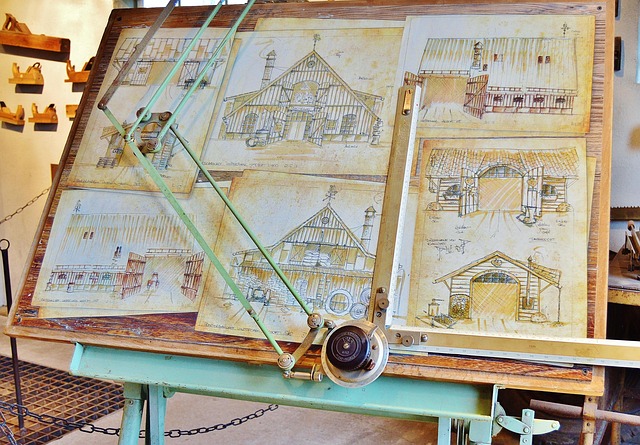BIM integration in CAD drafting for architects transforms design and construction by merging 2D/3D models, enhancing collaboration with real-time data sharing, reducing errors, and improving visualization. This digital approach centralizes project info, streamlining workflows, and enabling informed decision-making throughout all phases, ultimately expediting project delivery and enhancing quality.
In today’s collaborative construction industry, BIM-integrated drafting is transforming how architects and designers work. This article explores the seamless fusion of Building Information Modeling (BIM) with Computer-Aided Design (CAD) drafting, unlocking enhanced collaboration and efficiency. We delve into the benefits, from improved information management to streamlined workflows, revolutionizing the architecture field. By understanding BIM integration, architects can master CAD drafting for better project outcomes.
Understanding BIM Integration in CAD Drafting
BIM (Building Information Modeling) integration in CAD drafting is transforming how architects and design professionals work. It involves seamlessly incorporating building data into 2D or 3D digital models, enabling a holistic view of a structure’s components and systems from conception to completion. By integrating BIM with CAD drafting for architects, projects gain enhanced efficiency, accuracy, and coordination among various stakeholders.
This process allows for real-time collaboration, where multiple team members can access and update the same model simultaneously. This shared data environment reduces errors, streamlines communication, and promotes informed decision-making throughout the design and construction lifecycle. For architects, BIM-integrated drafting means faster project delivery, better quality outcomes, and more effective client communication through dynamic, visual representations of their designs.
Enhancing Collaboration Between Architects and Designers
BIM-integrated drafting revolutionizes collaboration between architects and designers by seamlessly merging 2D and 3D modeling in a unified digital environment. This evolution from traditional CAD drafting for architects facilitates real-time data sharing, enabling both parties to work simultaneously on the same project models. With this integrated approach, architects can provide precise technical drawings while designers benefit from enhanced visual representations, fostering better communication and coordination throughout the design process.
The benefits of BIM integration extend beyond improved collaboration, offering increased efficiency, reduced errors, and enhanced project visualization. By leveraging this technology, teams can detect potential conflicts early in the design phase, avoiding costly changes down the line. This streamlined workflow not only saves time but also ensures that the final product aligns with the initial design intent, resulting in higher-quality architectural projects.
Streamlining Building Information Management
Building Information Management (BIM) has transformed the way architects and construction professionals collaborate on projects, especially when combined with CAD drafting. By integrating BIM into the drafting process, architects can streamline their workflows and enhance efficiency significantly. This digital approach allows for a centralized repository of project data, making it easily accessible to all team members in real-time.
With BIM, architects can create detailed 3D models that incorporate precise building specifications, materials, and cost estimates. This unified platform facilitates seamless communication between architects, engineers, and contractors, reducing errors and miscommunications often found in traditional CAD drafting for architects. The collaborative nature of BIM ensures everyone works from the same information set, leading to better project outcomes and faster completion times.
The Future of Architecture: Seamless BIM Workflows
The future of architecture lies in seamless BIM workflows, where digital technologies transform how projects are conceived and delivered. By integrating BIM-integrated drafting into their practices, architects can achieve a new level of collaboration and efficiency. This innovative approach goes beyond traditional CAD drafting for architects, enabling them to create comprehensive digital models that serve as the single source of truth for all project stakeholders.
Seamless BIM workflows facilitate real-time coordination among various disciplines, reducing errors and clashes at every stage of design and construction. With everyone working on the same virtual model, architects can ensure better communication, faster decision-making, and more informed designs. This not only speeds up project timelines but also enhances overall project quality, setting new benchmarks for architectural excellence.
BIM-integrated drafting is transforming the architecture industry by fostering seamless collaboration among architects, designers, and stakeholders. By embracing this technology, professionals can streamline building information management, enhance communication, and ultimately deliver projects more efficiently. As the future of architecture leans towards seamless BIM workflows, adopting these practices becomes essential for staying competitive and meeting the evolving demands of modern construction.
